The case study below looks in detail at how to perform a review of your league standings. This specific case study is written from the perspective of performing this review in late August, but reviewing and assessing your league standings is a valuable exercise to perform at any point in the season.
This review will guide the moves you make throughout the season. It’s absolutely critical to have an in-depth understanding of the league standings. This is not a simple exercise. It will take time. But that’s exactly why it’s advantageous and why it can be an advantage for you.
It’s Late August. You’re In The Middle Of The League Standings.
How many rotisserie points can you legitimately expect to gain in the standings at this point of the season? If you think you’re out of it, or don’t think you can catch the leaders because you’re in fifth place, I’d encourage you to take a closer look. You might be surprised at how significantly things can still change.
The Standings
For the rest of this case study, assume the standings shown in the table below. Let’s look at things from the perspective of the team in fifth place, E.A.B.O.D. Does this team have a chance to catch the leader?
The first thing worth noting, besides the fact that I play in a nine team league (I’ve been trying to tell you I’m just a “regular guy”), is the first place team has a sizeable lead over the rest of the pack and sits at 68.5 points. Then things are tightly bunched with four team near the mid-50s.
This Is Just A Battle For Second PLace, Who Cares
We’ll take a look at if catching the first place team is possible in a moment. But even if this is just a four-team battle for second place, taking this battle seriously, applying a well-devised strategy, and making a full-fledged effort to pass the current fourth, third, and second place teams is a valuable exercise. What if next year it’s a four-team race for first? Or even a two-team race? If you’re able to win a four-team race over the last month of the season, next year’s two-team race will seem simple.
I got the idea for this case study while listening to Todd Zola on the August 9th edition of the BaseballHQ Radio Podcast. His point was that it really doesn’t matter what place you are in the standings. The exercise of going through a review of your team and the league standings in order to gain a few points is great practice. Always seek to improve your team. You’ll learn a lot from these seemingly unimportant battles.
Let’s Take A Closer Look
Remember, with roughly one month to play, we currently sit in 5th place at 52 points. If we are to somehow pull this miracle off, we would need to reach 69 points, meaning we must somehow climb 17 points in the standings.
The best way to figure out how many points are possible? Go category-by-category through the standings and figure out what points can easily be earned and those that could be earned with a little luck. It’s also worth looking at the categories in which we could lose points (easily or due to bad luck).
Starting with runs, we’ve got a total of 830 runs to this point in the season. Trying to be realistic about how many runs can actually be made up in about one month, we’ll say making up one run a day is possible, but not likely. More likely, making up 15 runs over the next 30 days is a realistic possibility. So anyone within 15 runs of our 830 total can be caught, giving us another rotisserie point.
Looking at the actual standings below, only one team is between our 830 runs and the attainable 845 (that’s SpartyOn with 841). One additional team, The Naturals, is within 30 (at 857 runs to our 830).
So that’s one standing point we can realistically gain (catching SpartyOn) and one more we could possibly gain, but it’s unlikely (The Naturals). Note, if you’re also concerned about being caught in the standings, tracking the points you could potentially lose is another valuable exercise. There is one team hot on our tails, with 827 R, and two others within 30 runs (805 and 802).
Summarizing the points we could gain or lose:
Now extend this exercise out to the remaining hitting categories. We’ll say anyone within 12 HR can realistically be caught and within 20 could potentially be caught. Within 15 RBI can legitimately be caught and 30 RBI is possible but unlikely. 10 SB can reasonable be caught, 20 would be possible but unlikely. And within .003 BA points can be caught, .006 would be possible but unlikely.
Pitching Is A Little More Complicated
This particular league happens to have an innings limit of 1,550 innings. Innings can be manipulated more easily than games played by hitters. A team could theoretically start streaming a multitude of pitchers and easily increase innings in the short-term, whereas the limited number of lineup spots and days off for hitters prevents you from increasing at bats in the short-term. This leads to potentially distorted pitching standings.
Look at the current standings below. Take for instance, The Heat in seventh place. The team is clearly ahead of everyone else’s pace for innings pitched and will hit the 1,550 cap soon. The 1,185 strikeouts in 1,364 innings isn’t nearly as impressive as the 1,145 strikeouts the Warriors (eighth place) have in 1,132 innings. The Warriors need only 40 strike outs in the next 200 IP to catch The Heat. So we have to take the innings pitched distortion into account.
The innings pitched distortion can only affect raw counting stats like W, SV, and K. Pitching more or less innings can’t directly affect rate statistics like ERA and WHIP.
Looking more closely at wins, we can calculate the rate at which teams are earning wins by dividing wins by total IP. This gives us “Wins per inning”. Granted, this is an odd statistic and it’s not useful for many things, but it will help us remove the distortion caused by teams simply having more innings pitched than others.
Our hypothetical team in this case study is highlighted in yellow with 73 wins, or 0.065 wins per IP. Looking at other teams, we actually have a higher wins per inning than the team with 1,364 innings pitched. Even though that team has 86 wins, we are earning wins at a faster rate (0.065 vs. 0.063). Theoretically we can pass this team simply by continuing to start our current pitchers. Once we get to 1,364 innings, we should have more than 86 wins.
The other team with 86 wins (in 1st place) can’t be caught. We have nearly the same number of innings (1,129.33 vs. 1,129.66), but they already have 86 wins to our 73. And because we are in third place for wins (86, 86, then our 73), there are no more points to be made up in wins.
But we could lose points. The team with 68 wins is earning wins at 0.063 W per inning, very close to our 0.065. So that seems like a point we could easily lose as they close the gap in innings. The other teams near us in raw total (we have 73 wins, others have 65, 66, and 70), have much lower wins per innings when compared to ours (0.065 compared to 0.057, 0.058, 0.059). So we should be safe from losing additional points.
Moving on to strikeouts, we’re striking out 0.962 batters per inning. Three teams are ahead of us in raw counts right now. We have 1,087 strikeouts and trail teams with 1,112 Ks, 1,145Ks, and 1,185 Ks. We have a higher strikeout rate than the team with 1,112, 0.962 vs. 0.934, so we should easily pass them when we catch up to their 1,190 innings. The same can be said for the team with 1,185 strikeouts (a poor rate of 0.868 vs. our 0.962). But it doesn’t look like we can catch the team with 1,145 Ks and their rate of 1.011 per inning.
In trying to identify points we could lose, only the first and third place team appear to be within striking distance. We lead in raw totals (1,087 K to their 1,071 and 1,067) and rate (0.962 to their 0.948 and 0.936), but things are close enough that it seems the points could be in jeopardy. Another way to look at it is that we have almost the exact same IP as both teams and lead one by 20 Ks and one by 16. If they pick up a couple middle reliever strikeout artists, that gap could be closed.
Saves are a bit of a different story. The naked eye can quickly detect that nobody is realistically going to catch us in saves as we have a 38 save lead over the closest team (our 113 to 75). And it seems like we could reasonably catch two teams ahead of us (our 113 saves to their 121 and 123, and only 10 IP separating the three teams). And we might have a shot at the saves leader who has 129, albeit in 56 fewer innings than us.
You could go through the exercise of calculating saves per inning, but this category is more of a judgment call. Saves can fluctuate rather dramatically depending on how many closers each team has, so be sure to inventory this before jumping to conclusions.
Put All the Pitching Categories Together
Add the pretty colored arrows:
Let’s assume we can realistically drop our ERA 0.05 points and potentially drop it as much as 0.10 with some luck. Two teams fall within the “realistic” range (our 3.33 to their 3.31 and 3.29). And we can reasonably move our WHIP 0.03 and potentially drop it 0.05. This means we could pass two teams and potentially lose two points.
Look At The Big Picture
Adding all the pretty arrows together we get the following table:
There are 13 points that our team has within striking distance.
And to refresh your memory about the current standings. We are team E.A.B.O.D. in this make believe world.
So we’re trying to get at least 17 points to catch the leader. Our 13 at least puts us into second place (52 + 13 = 65 points).
But we’re forgetting something!!!!
“Bonus” Points
The first place team can also lose points. Maybe there are teams close to passing them in offensive categories. And it’s very possible they are benefiting from some distorted pitching stats. Let’s take a look.
Nobody’s going to catch them in wins. One team has them tied at 86, but that same team has pitched 200 more innings. And look at the wins per inning column, they’re lapping the field.
The third place team could possibly catch them in strikeouts. They’re only four strikeouts apart (1,071 to 1,067) and only 10 IP separate the teams. But this is offset by an extra point the first place team will surely get (this team with 1,364 innings of low strikeout rates).
So they won’t lose any points in Ws or Ks. Let’s look at everything else:
I see six potential point losses. And even better, one of them is our team, E.A.B.O.D. We might be able to catch their 121 saves with out 113 total. And if we happen to pass the first place team, that is essentially worth 2 points! One extra point for our team and one less point for the first place team.
One of our “unlikely but possible” points would also allow us to get a bonus point for passing the first place team. We might get lucky and our 830 R could catch The Naturals and their 857.
Are You Done Yet
Stick with me. If we add on our possible “bonus” points, categories where we would essentially get two points because we would pass the first place team, and then add in other possible points the first place team could lose, we could realistically make up 19 points! And we need only 17. First place is still attainable…
You Can’t Make Up That Much Ground
Granted, it’s unlikely that your team will start excelling in each of the 10 categories all at once. And more unlikely that the first place team will start floundering in each of their six potential categories they can lose points in. But the point is that there are A LOT OF POINTS still in play.
Don’t forget another huge factor working in your favor: September is a weird month. The major leagues are flooded with minor league call ups. Playing time can change dramatically for many players. The distractions of college football, NFL football, fantasy football, and kids going back to school are in full effect.
These factors make it more likely teams in front of you will be distracted. And with the playing time shifts, distractions can be extremely detrimental. On top of this, a first place team may be less likely to make significant moves to counteract playing time shifts. The first place team is more likely to be hindered by loyalty to the players that got them to the lead.
So just when you are thinking you can’t make up 20 runs in one month, September may be your best friend.
Don’t give up.
When Should I Use This?
This is a lengthy post and it’s written from the perspective of conducting this standings review in late-August. But the same principles apply for many other situations.
- You should be running a thorough standings review on at least a monthly basis, probably starting in about mid-May. This will help you keep on top of weaknesses in your team and help identify problematic categories before you get too far behind.
- If you are looking to propose a significant trade or are the recipient of a significant offer, you should perform a standings review to develop an understanding of the precise effect the trade will have on your team. Does it improve you in categories where you can easily catch other teams? Will it weaken you in areas where you are susceptible to teams catching you from behind?
- If you need to replace an injured player or you’re looking to pickup a free agent, perform a high level (not necessarily as detailed as the one outlined above) standings review in order to identify the player that can help you the most.
- As you get into August, consider performing the reviews every other week or weekly in order to make your late season push to move up the standings.
Conclusion
This is involved. This is a lot of work. But doing it will separate you from the competition and give you a definite strategic advantage. If you have an extremely thorough understanding of your team and its place in the standings, you have an advantage with every move and transaction you make. For example, deciding on picking up the speedy rookie outfielder or the aging home run hitter becomes much easier if you know the standings. A manager without a strong understanding of the league standings will end up making misguided moves.
Be smart. Work hard. You can still win your league.
Do you have any other tips for performing a standings review? What do you look at? How often do you perform an exercise like this?


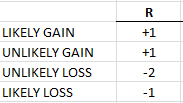


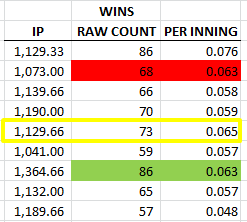
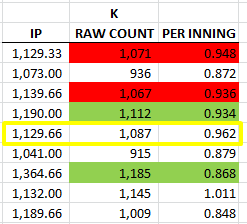


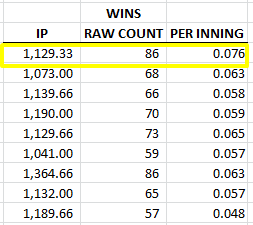
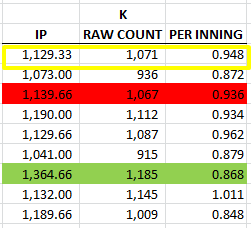


i do similar analysis. typically a lot of per game forecasting for leagues with max’s in certain statistics gs/gp
Hi Mike, glad to hear I’m not alone. How do you do the per game forecasting? Do you use ROS projection downloads? Or where do you get the information? At what point in the season do you start doing this?